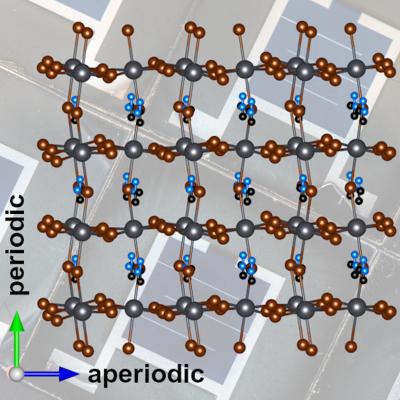A research team at HZB has used four-dimensional modelling to interpret structural data of methylammonium lead bromide (MAPbBr3), identifying incommensurable superstructures and modulations of the predominant structure.
Despite intensive research, it was not possible to precisely elucidate the crystal structures of perovskites with their diverse modulations and superstructures as a function of temperature, even for the best-known perovskite compounds such as methylammonium and formamidinium lead halide. Now, the HZB team has analyzed structural data of methylammonium lead bromide (MAPbBr3) with a novel model. Postdoc Dr. Dennis Wiedemann used a model that takes a fourth dimension into account in addition to the three spatial dimensions. The structural data were measured at a temperature of 150 Kelvin at the University of Columbia.
The data on the crystal structure therefore show an average value over many elementary cells, so that modulations and superstructures are not always recognizable. The new model explains the incommensurable superstructures observed in MAPbBr3 in a small temperature window around 150 K, which do not have the same periodicity as the crystal lattice.
This complex structure comes from tilts and shifts in the crystal structure. "The new model will also provide more detailed insights into the modulated structures of other perovskite compounds," says Breternitz.
